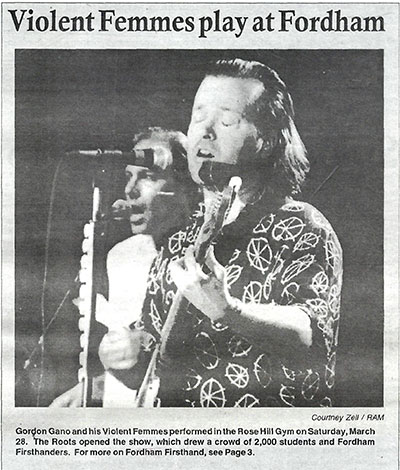

But Danny is no “Gump.” He is a wry, canny, intellectual talent who easily transitioned from music journalist to public relations to band manager and back again. Unlike, say, a Hilly Kristal, who built a venue called CBGB’s that would introduce the world to the next phase of influential performers because they came to him, Danny found himself in the right place at the right time – much like a Forrest Gump or a Zelig who were present at key moments in world history and wound up affecting the direction in sometimes unintentional ways. Photos courtesy of Danny Fields.Īnd then there is Danny Fields. Left: Danny Fields with Linda Stein in London, 1977. Paul McCartney, Linda Eastman, who thanks to her status as the girlfriend of a Beatle, had unprecedented behind-the-scenes access. Names like Lester Bangs, the celebrity music journalist immortalized by Philip Seymour Hoffman’s performance in the film “Almost Famous.” Bill Graham, music impresario and ruler of the venues the Fillmore East and West. The personalities who completed the scene by just being there writing, promoting, even managing, and therefore, influencing the direction of music at the time. These are the “non-artists” who, in their own way, were artists of a sort. And yet, for those of us who are true fans of the history of popular music, other names are spoken within the same breath while mentioning such talents as Neil Young and The Runaways. We remember the cover art of an album and a favorite tune. Or how a song like Queen’s “We Are the Champions” has forever remained embedded within our psyche thanks to sports championships and popular broadcasts. When we think of the 70s, we reminisce over how we listened to Bad Company, thanks to a cousin’s 8-track system in his car, or were turned on to the New York Dolls because you had that one friend who wasn’t afraid to wear eyeliner, having suddenly gotten into glam rock like David Bowie, Gary Moore and T-Rex. Most people reading this article listened to or were fans of these bands during their formative years. But it was the 70s, where all of these differing sounds came to the fore a rambunctious Led Zeppelin would grace a magazine cover one week, then the more tranquil James Taylor would headline the next. Bands like the Beatles and the Rolling Stones had already started to mix things up in the mid-to-late 60s, while underground acts like the MC5 and Velvet Underground were enjoyed by a specific audience. Stadium Rock, Heavy Metal, Folk and Country, Disco and ultimately Punk would grace the covers of music magazines when, prior to that, ad space and columns were limited to Elvis Presley, Frank Sinatra and the occasional Motown single.

While Rock n’ Roll had in its inception the blues and folk parlors of Greenwich Village and the American south, the various sub-genres came to be during the turn of the 1960s leading into the next decade. The 70s were a particularly catalytic era for popular music. The proof is in the photographs on his wall. You think back on rock history? You might think of Max’s Kansas City. All this while surrounded by photographs either taken by him or featuring Danny hanging out with Bowie, David Johansen, Patti Smith, etc. The man actually made me tea! Danny Fields… makes tea. And yet here he was graciously cleaning his kitchen table because he wanted his guests to feel comfortable. This was a man who worked with The Doors, had managed Iggy Pop, had toured with The Ramones and was friends and acquaintances with so many icons and rebels of the time. When I first met Danny, it was by way of introduction through a journalist friend of mine.

At the party after the Ramone’s New Year’s show at the Rainbow Theater in London, 1977. Linda Clark, Leee Black Childers, Nancy Spungen, Sid Vicious and Dee Dee Ramone.


 0 kommentar(er)
0 kommentar(er)
